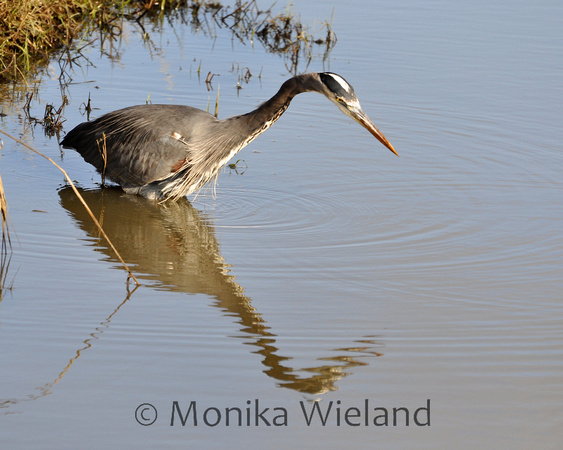Okay, I'm back up and running with both computer and internet, so it's time to play some catch up....
On the Friday after Thanksgiving, after a week of wind and rain, the weather finally cleared and it was a perfect day to go bird-watching at Ridgefield National Wildlife Refuge. We ended up spending more than three hours there, finding more than 30 species. Among the highlights this time of year are the water birds. All the overwintering ducks can potentially be found at Ridgefield. The most numerous on this visit were the mallards and northern shoveler, though many other species were seen in smaller numbers.
On the Friday after Thanksgiving, after a week of wind and rain, the weather finally cleared and it was a perfect day to go bird-watching at Ridgefield National Wildlife Refuge. We ended up spending more than three hours there, finding more than 30 species. Among the highlights this time of year are the water birds. All the overwintering ducks can potentially be found at Ridgefield. The most numerous on this visit were the mallards and northern shoveler, though many other species were seen in smaller numbers.
The first photo op of the day came when these three pied-billed grebes swam down a flooded ditch:
In terms of raptors, we saw northern harriers, bald eagles, and a red-shouldered hawk, but most numerous were the red-tailed hawks, including this one that stopped to look right at me:
I couldn't believe how many spider webs were everywhere. You could see them flying through the air when looking through binoculars, and they coated most all of the plants and grasses. On the drive home we noticed some of the tiny spiders had found their way inside of the car, too. It seemed like some type of tiny spider hatching explosion. You can see the webs in this first landscape shot, followed by a close up:
One of the birds I was really hoping to see while at Ridgefield was the vermilion flycatcher that has been hanging out there. I had been reading reports about it on the Washington birding listserv, hoping it would stay around long enough for me to see it. It hadn't been reported for a week or two, but had been relocated earlier in the morning on the same day we were at the refuge. I thought we were in luck, but when we reached the site it had most recently been seen we couldn't turn it up. While stopped looking for it, we did find a flock of purple finches, a red-breasted sapsucker, a brown creeper, two white-breasted nuthatches, and a Bewick's wren, so it was still a very bird-active area.
In the final stretch of the auto-tour route it was the herons that stole the show. First, we got a nice look at a great egret. Then, we paused to watch this great blue heron successfully catch several small fish:
Then, around the corner, I was amazed to see this American bittern right out in the open. These birds are often very tucked away in the grasses and hard to see, but this one was walking right along the edge of the marsh:
A couple of things really stood out while seeing this bird at close range. One was the beautiful, intricate patterning on the feathers. The other was the surprisingly large talons on the feet!
While we were watching, the bittern took a few steps back into the grass. It was amazing how, even while looking directly at it, the bird began to disappear into the grass just a few feet away.
When we got back to the start of the auto tour loop, we checked in with the park ranger who said no one else had seen the vermilion flycatcher after that one sighting early in the morning. Then, just as we were ready to leave, he came up to us on his cell phone and said he was talking to another birder who was looking right at it. Of course, being this close to not just a year bird but a life bird, I had to try again! We made another trip around the auto tour route, spending extra time in the area the flycatcher was seen, but despite having several other birders nearby looking for the same bird, we weren't able to relocate it.
There were several other year birds I was hoping to get while in Oregon, and a few other unexpected reports came in while I was there. Next up, I'll report on my successes and failures in the year bird hunt.








No comments:
Post a Comment